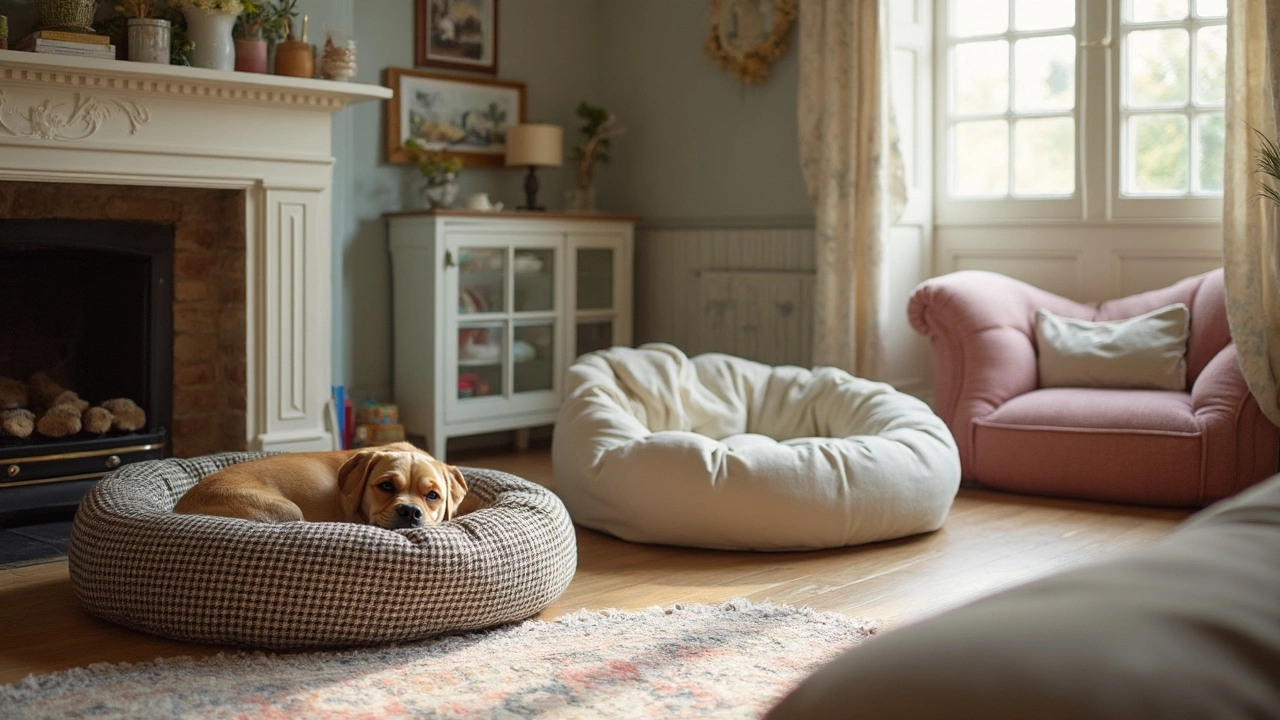Pet Sleeping: Practical Tips for a Restful Night with Your Dog
Ever caught your pup tossing and turning at 2 am? A good night's sleep isn’t just for you – your dog needs it too. Below are easy, no‑fuss steps you can start using tonight to help your furry friend settle down and stay safe while they snooze.
Why Sleep Matters for Dogs
Dogs, just like people, need deep sleep to keep their immune system sharp and their mood balanced. Puppies, especially those under three months, spend up to 18 hours a day sleeping. Skipping that rest can lead to cranky behavior, slower growth, and more bathroom accidents. A well‑rested dog is usually calmer during walks, less likely to bark, and happier overall.
Nighttime Safety Basics
1. Choose the right sleeping spot. A quiet corner with a comfortable mat or blanket works best. If your dog prefers a crate, make sure it’s big enough to stand, turn around, and stretch, but not so big that they feel lost inside.
2. Mind the temperature. Most dogs are comfortable between 18‑21 °C (65‑70 °F). Too hot, and they’ll pant; too cold, and they’ll shiver. A light blanket can help smaller breeds, while larger dogs often do fine on a simple mat.
3. Collar at night? If your dog wears a heavy or metal collar, consider taking it off while they sleep. A loose collar can catch on bedding or cause a sore spot. The same goes for prong‑style or choke‑type collars – they’re best left on during training, not bedtime.
4. Keep the routine steady. Dogs love predictability. Try a short pre‑bed walk, a gentle petting session, and a cue word like “night” to signal sleep time. Consistency helps them wind down faster.
5. Limit water before bed. Offering a small drink an hour before lights out reduces the need for midnight bathroom trips. Still, make sure fresh water is available in the morning.
Other quick tweaks can make a big difference. Turn off bright lights at least 30 minutes before bedtime – dim lighting signals the brain to produce melatonin, the sleep hormone. If your dog is a light sleeper, a white‑noise fan can drown out street sounds that might otherwise wake them.
Got a puppy that wakes up every two hours? Remember, they’re still mastering bladder control. A crate with a pee‑pad nearby can help bridge the gap until they’re old enough to hold it longer. Gradually move the pad out as they improve.
Finally, watch for signs of discomfort. Excessive scratching, whining, or changing sleeping positions can hint at allergies, joint pain, or even a too‑hard bed. If you notice persistent issues, a quick chat with your vet can clear things up.
Putting these simple steps into practice will turn chaotic night‑time antics into calm, restful sleep for both you and your pet. Give one or two changes a try tonight – you’ll likely notice a calmer dog and a quieter house in no time.

Dog Bed in Every Room: Is It Worth It for Your Pup?
Is giving your dog a bed in every room a smart idea, or just overkill? This article looks at how multiple dog beds could impact your dog's health, behavior, and daily comfort. Get tips on picking the best spots and bed types for different rooms. Plus, learn how setup affects paw care, anxiety, and even your furniture. Find out what really suits your dog's routine and your home.
View more